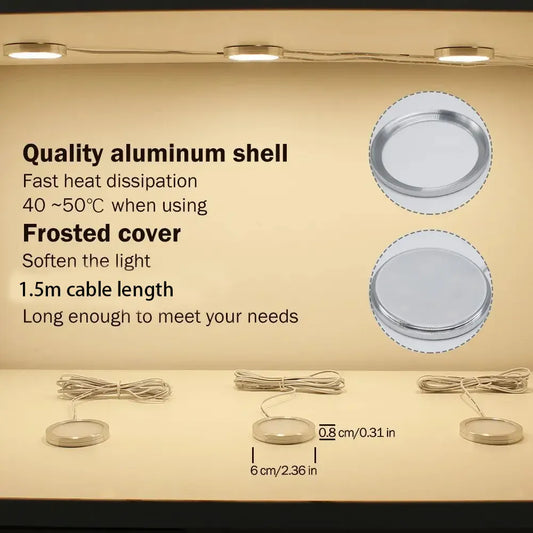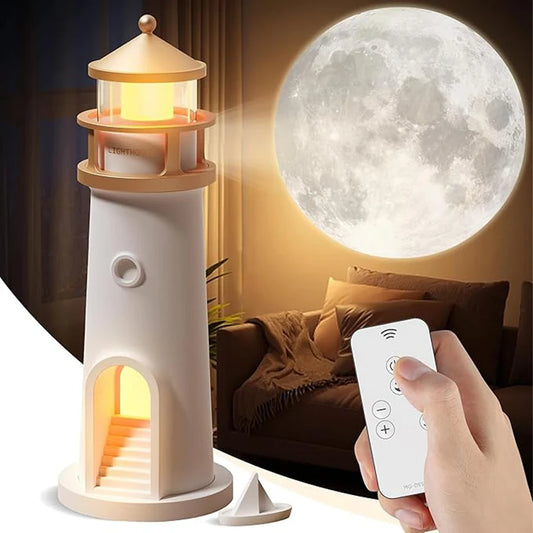
How To Install Under Cabinet Lighting - Step-by-Step Guides
Share
under cabinet lighting can be installed by following a detailed, step-by-step process that varies depending on the type of lighting chosen. Whether you opt for LED strips, puck lights, or hardwired systems, understanding the installation process is crucial for achieving the best results. Here's a comprehensive guide supported by expert advice and practical examples.
Step-by-Step Installation Guide
1. Choose Your Lighting Type
The first step in installing under cabinet lighting is selecting the right type of light. Common options include:
- LED Strip Lights: Flexible, easy to install, and provide even lighting.
- Puck Lights: Offer focused, bright light and can be surface-mounted or recessed.
- Fluorescent Lights: Bright and energy-efficient, but bulkier than LEDs.
- Xenon Lights: Provide warm light but generate more heat and use more power.
2. Plan Your Layout
Measure the length of the cabinets and decide where you want the lights. Planning the layout helps ensure even lighting and identifies the best locations for power sources. Mark the positions with a pencil.
3. Gather Your Tools and Materials
You'll need various tools and materials depending on the type of lighting you choose:
- LED Strip Lights: Scissors, adhesive backing, or mounting clips.
- Puck Lights: Drill, screws, and possibly a hole saw for recessed mounting.
- Hardwired Lights: Wire stripper, screwdriver, voltage tester, and possibly a drill for routing wires.
4. Prepare the Surface
Clean the underside of the cabinets with a mild detergent to remove grease and dust. This step is crucial for adhesive-backed lights to ensure they stick properly and for any drilling required.
5. Install the Lights
For LED Strip Lights:

- Measure and Cut: Measure the length of the cabinets and cut the LED strip to size, if necessary.
- Peel and Stick: Remove the adhesive backing and press the strip firmly against the underside of the cabinet.
- Secure with Clips: For additional security, use mounting clips every 12 inches.
For Puck Lights:

- Mark and Drill: Mark the locations for the puck lights and drill pilot holes. If recessing the lights, use a hole saw to cut the appropriate size hole.
- Mount: Attach the puck lights using screws or adhesive, depending on the model.
For Hardwired Lights:

- Turn Off Power: Ensure the power is off at the circuit breaker.
- Route Wires: Drill holes for wiring if needed, and route the wires through the cabinets.
- Connect: Connect the wires to the fixtures and secure them with wire nuts. Attach the lights to the cabinets using screws or mounting brackets.
6. Connect to Power Source
Plug-in Lights: Simply plug the lights into a nearby outlet. Use cable management solutions to hide the cords.
Hardwired Lights: Connect the lights to the existing electrical wiring or install a new circuit if necessary. This step often requires a licensed electrician to ensure safety and compliance with local electrical codes.
7. Test the Lights
Turn on the power and test the lights to ensure they are working correctly. Check for even lighting and make any necessary adjustments. Ensure all connections are secure and there are no loose wires.
Further reading:
- How Far Back Should Under Cabinet Lighting Be?
- How to Install Under Cabinet LED Strip Lighting?
- How to Install Hardwired Under Cabinet Lighting
- How to Space Under Cabinet Lighting?
Expert Opinions and Data
- National Electrical Code (NEC): The NEC provides guidelines for safe electrical installations. Compliance with these standards is crucial for preventing electrical hazards and ensuring a safe installation.
- Illuminating Engineering Society (IES): The IES recommends proper mounting techniques to ensure consistent and reliable illumination. Their guidelines suggest using mechanical fasteners, such as screws and brackets, for the most secure installations.
Practical Examples and Tips
Example 1: Installing LED Strip Lights
In my own kitchen, I installed LED strip lights under the cabinets. After cleaning the surface, I measured the length of the cabinets, cut the strips to size, and used the adhesive backing to secure them. For extra stability, I added mounting clips every 12 inches. The result was a bright, even light that has remained secure over time.
Example 2: Hardwiring Under Cabinet Lights
For my parents' kitchen, we opted for hardwired LED puck lights. We turned off the power at the circuit breaker, drilled holes for the wiring, and routed the wires through the cabinets. A licensed electrician connected the wires to a new circuit, and we mounted the lights using screws. This provided a seamless, professional look with robust lighting.
Further reading:
- What is the Difference Between Hardwired and Plug-in Under Cabinet Lighting?
- What Kind of Wire Do You Use for Under Cabinet Lighting?
- How to Cover the Underside of Cabinets?
Conclusion
In conclusion, installing under cabinet lighting involves careful planning, the right tools, and following a detailed process to ensure a secure and effective setup. Whether using adhesive-backed LED strips, puck lights, or hardwired fixtures, understanding the steps and following expert recommendations will help you achieve the best results. Proper installation not only enhances the functionality of your kitchen but also improves its aesthetics.
For more comprehensive guidance on selecting the best under cabinet lighting for your kitchen, check out our detailed guide: Under Cabinet Lighting Buying Guide.
Explore our range of motion sensor under cabinet lighting solutions at Lumaz to find the perfect fit for your kitchen.
FAQs
Can I Daisy Chain Under Cabinet Lights?
Yes, you can daisy chain under cabinet lights by connecting multiple lights in series using a single power source. This method simplifies wiring, reduces clutter, and ensures consistent lighting, making it an efficient option for many setups.
For detailed insights, visit the article: Benefits of Daisy Chaining Under Cabinet Lights
Do under cabinet lights go in front or back?
Under cabinet lights are best placed towards the front of the cabinet. This position maximizes countertop illumination, reduces shadows, and ensures well-lit workspaces, which is why experts generally recommend front placement.
For detailed insights, visit the article: Why Front Placement is Best?
Should I Hire an Electrician to Install Under Cabinet Lighting?
Whether you need an electrician depends on the type of under cabinet lighting. Plug-in or battery-operated lights can be DIY, but hardwired installations typically require an electrician for safety and code compliance.
For detailed insights, visit the article: When to Call an Electrician
Do Under Cabinet LED Lights Need a Transformer?
Yes, under cabinet LED lights usually need a transformer to provide the correct voltage and ensure proper performance. Always use the transformer recommended by the manufacturer for best results.
For detailed insights, visit the article: Understanding Transformers and LED Lights
Do You Need a Valance for Under Cabinet Lighting?
A valance isn't required for under cabinet lighting, but it can improve both aesthetics and functionality by concealing fixtures, reducing glare, and protecting against dust and grease.
For detailed insights, visit the article: Benefits of Using a Valance
Does Under Cabinet Lighting Need a Switch?
Yes, under cabinet lighting benefits from having a switch, offering convenience, energy efficiency, and better control. Choose a switch type that suits your needs and enhances your kitchen's functionality.
For detailed insights, visit the article: Why Consider a Switch for Under Cabinet Lighting?




























 />
/>
 />
/>
 />
/>
 />
/>
 />
/>